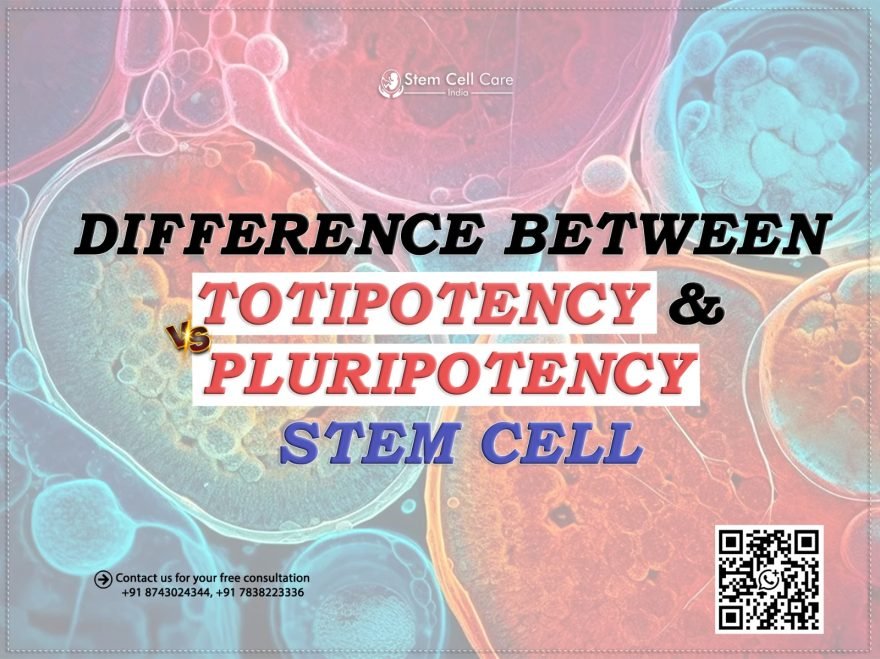Have you ever thought that if the single cell in your body has the potential to rebuild damaged tissues, reverse chronic disease? This would be an inspiring reality behind the stem cells. They are the tiny building blocks of the body’s repair system. Stem cells have revolutionized the way we treat severe conditions, providing new hope where traditional treatment often falls short.
However, in the world of regenerative medicine, you might have heard of two terms frequently, which are totipotent and pluripotent stem cells. While they may sound complex, the difference between them is important, especially if you are exploring advanced treatment like stem cell therapy.
This blog will simply walk you through what makes these stem cells unique, how they impact medical care, and why understanding them could be a key step in your journey towards better health.
What Are Totipotent and Pluripotent Stem Cells
As you know that both totipotent and pluripotent stem cells are capable of becoming other types of cells. However, what they can become depends very much. Here’s a straightforward comparison:
| Features | Totipotent Stem Cells | Pluripotent Stem Cells |
| Development Stage | Earliest stage (zygote to morula) | It is derived from the blastocyst (early embryo) |
| Cell Types They Can Become | All body cells and placental cells | All body cells, not placement cells |
| Natural Occurrence | Fertilized egg (zygote) | Embryonic stem cells, induced pluripotent cells |
| Potential in Therapy | Limited due to ethical issues | Widely used in research and therapy |
| Clinical Use | It is rare | Often common in stem cell therapy |
Why Understanding This Difference Matters in Medicin?
In real applications like stem cell therapy or bone marrow transplant, pluripotent stem cells are the stars. Pluripotent stem cells have the ability to be reprogrammed and can develop into many different types of tissue—muscle, nerve, blood, and so on.
With an understanding of their promise, doctors can match the right treatment with the right disease, including:
- Spinal cord injury
- Type 1 diabetes
- Parkinson’s disease
- Heart disease
- Blood disease (with bone marrow transplants)
Benefits of Pluripotent Stem Cell Therapy
Stem cell therapy with pluripotent cells is growing very fast in clinical use because of the following benefits:
- Tissue Regeneration: Triggers the body’s own healing process.
- Non-invasive Alternatives: May reduce the need for surgery.
- Improves Quality of Life: Offers symptom relief in chronic illness.
- Individualized Treatment: Cells can be reprogrammed from your tissues.
- Bone Marrow Transplant Compatible: Very useful in the cure of blood cancers.
For Expert Advice
If you are considering stem cell therapy, or if someone you know is considering stem cell therapy, it is advisable to speak with a reputable counselor who understands the nuances of the procedure and your individual needs.
Consider Stem Cell Care India, a reputable and unique company in consulting regenerative medicine. They provide customized guidance and professional evaluation, and treatment to provide you with novel treatments, including bone marrow transplants and stem cell-derived therapies.
The Concluding Thoughts
Understanding the difference between totipotent stem cells and pluripotent stem cells is not only a good science lesson, but also presents opportunities for therapeutic avenues that can change lives! Totipotent stem cells are important and also very valuable as a source of cells for development. However, pluripotent stem cells are, by far, the most actively investigated stem cells in modern regenerative medicine.


